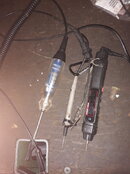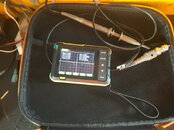TrimixToo
Contributor
Mitchel manuals used to have these articles in their magazines designed to teach noobs and oldsters about new technology. I was always fascinated by them, reading more than my share. I do remember reading that condensers (capacitors) were sized to provide the proper spark duration. Too close or far, and it will cause pitting. Pitting and being non-parallel makes gapping points nigh on impossible. Since most were nickel plated, sanding or filing them to be smooth, ruined the finish. Using a dwell meter allowed you to set points precisely, regardless of any imperfections.
Yes, a dwell meter can let you set pitted points properly. But as the plating is already shot (along with the condenser if it was the right size), it's a temporary fix at best.
I thought the condensers were sized to absorb the remaining energy contained in the collapsing field in the ignition coil after the plug fired and the secondary coil voltage dropped to the point where the plug would no longer spark. This prevents a spark from forming across the points as they close. Too large, and one side would pit. Too small, and the other side would pit. At one point in my life (pun intended) I knew from the direction of pitting whether a condenser was too large or too small because changing coil size could affect the right condenser size.
But...it's been a long time, points and condensers are in the trash bin of history as far as I'm concerned, and I'm not going to go look it all up (grin).






